Thursday, February 4, 2010
Art Stud 2 Midterm Essay 4
At Tour Eiffel, two mimes fall in love and it is literally beyond words. On a long walk along Parc Monceau, a father and a daughter rediscover their relationship in a misleading conversation. In the square at the Place des Fêtes a Nigerian man lies bleeding for coffee. In a print shop in Le Marais a young Frenchman becomes hopelessly attracted to another man who may or may not speak his language. In a small apartment in Faubourg Saint-Denis, a struggling actress finds a friend in a man who will never be able to see the silver screen. And in the Quatrième Arrondissement, a letter carrier from Colorado narrates in rough French how she has fallen in love with the City of Paris.
These are the segments that stand out for me the most from the 2006 film Paris, Je T’aime, my favorite work of art. There are eighteen segments in all, representing the eighteen arrondissements (literally: districts) of the City of Paris. They are each about five to six minutes short, but always akin to flash fiction: just long enough to give meaning to an entire world.
I have never been to Paris. I have seen it in thousands of pictures, I have heard it mentioned countless times, I have yearned to visit it if only to gaze up at the Notre Dame or into the Louvre for a few fleeting moments… And yes, I do tend to become dramatic when I speak of L’île de France. That is why Paris, Je T’aime captivates my imagination. But besides its obvious charms, it is also interesting because despite being the meeting of the minds of more than twenty-one directors, it has a seamless character to it. Each story flows to the next even when they have little but the theme of love and Paris as a backdrop in common.
Also worthy of note, beside the touching storylines, are the cinematic techniques that were employed. The segment for Parc Monceau by Alfonso Cuarón was shot by a single camera on the one side of the street, while the two characters in constant dialogue walked on the other side. There was always a distance, both in the camera angle and the words, that made the twist (the old man and the young woman were father and daughter) impossible to predict. Quartier de la Madeleine by Canadian writer-director Vincenzo Natali, which featured Elijah Wood and Olga Kurylenko, had no dialogue at all. There Wood was a backpacking tourist who fell in love with Kurylenko, a vampire. The segment was intentionally darker than the rest, and the color resolution was such that the blood would always be the center of attention.
One of the most dramatic segments was Place des Fêtes by South African writer-director Oliver Schmitz. It employed the flashback, from the point of view of a Nigerian man. As he lay bleeding from a stab wound, a nurse kneels in front of him, and he recognizes her as the woman who parks her car in the building he cleans. The flashback reveals that he always wanted to ask her out for coffee but he never got the chance—until that moment she arrived with an ambulance. Although perplexed she obliged, but by the time she got back with the coffee and remembered who he was, he had already died. There was barely any dialogue; the segment’s musical score is the Nigerian man’s voice singing a French love song. But as far as the cinematic devices go, I was most impressed by Faubourg Saint-Denis by German writer-director Tom Tykwer. It featured a blind student of languages, played by Melchior Beslon, and his girlfriend, a struggling actress, played by Natalie Portman. Halfway through listening to a call from Portman that sounded like she was breaking up with him, Beslon launches into a narration of how they met, how they fell in love, and how they grew apart, while the images were fast-forwarded montages of the different stages in their relationship. The development of the story was almost overwhelming because of the rhythm and repetition of the words and images. As his words became faster and faster, so did the images, and when it stopped he was sitting alone in front of his computer and there was a high-pitch sound I can only describe as what you hear after the complete confusion in your mind has subsided. Then the twist: Portman calls him again and explains that she has not broken up with him after all.
My top two story-wise are the ones that have to do with language. First, Le Marais by the American writer-director Gus van Sant, of Gaspard Ulliel telling Elias McConnel in endearing French how he believes they are soul mates. Much of the segment is Ulliel’s monologue about destiny and attraction. Before he left he gave him his telephone number, but McConnel did not understand what happened because as it turned out, he knew almost no French at all. When the shop owner explained it to him, he dashed out into the busy Parisian street to find Ulliel, an outsider plunging into an unknown world in pursuit of an idea. And second is the very last segment, set in the Quatrième Arrondissement. It was the one I empathized with most of all. It was also, I think, one of the most artistic because of the idea to make the character narrate a love for Paris in a language beginner’s grammar and accent. The effect was at once humorous and deeply touching. While the other stories dealt with the love of a person towards another person (or non-person, as in the case of the vampire), this is the only segment that explored the possibility of falling in love with a city. Et Paris m’aime aussi, she said in the end.
There are so many ideas, so many images, and so many sentiments in this movie that to watch it once is not enough. There are the obvious things, like ironies and lost love, and then there are those that while comedic convey so much of culture and art, like the story of the mimes who had nothing at first glance but had everything when they chose to make it so. This movie is also about possibilities, how anything can happen, how there may be adventure right where you stand. How there is always a story if you open your heart to it. And to me, what is so great is that Paris, Je T’aime explored both the insider’s and outsider’s perspectives. While each segment can stand on its own, taken together they become more than a movie: they become a statement. They seem to say, “This is Paris. Imperfect, wonderful, bizarre, beautiful Paris.” And they make even those of us who have never been there believe in the magic.
These are the segments that stand out for me the most from the 2006 film Paris, Je T’aime, my favorite work of art. There are eighteen segments in all, representing the eighteen arrondissements (literally: districts) of the City of Paris. They are each about five to six minutes short, but always akin to flash fiction: just long enough to give meaning to an entire world.
I have never been to Paris. I have seen it in thousands of pictures, I have heard it mentioned countless times, I have yearned to visit it if only to gaze up at the Notre Dame or into the Louvre for a few fleeting moments… And yes, I do tend to become dramatic when I speak of L’île de France. That is why Paris, Je T’aime captivates my imagination. But besides its obvious charms, it is also interesting because despite being the meeting of the minds of more than twenty-one directors, it has a seamless character to it. Each story flows to the next even when they have little but the theme of love and Paris as a backdrop in common.
Also worthy of note, beside the touching storylines, are the cinematic techniques that were employed. The segment for Parc Monceau by Alfonso Cuarón was shot by a single camera on the one side of the street, while the two characters in constant dialogue walked on the other side. There was always a distance, both in the camera angle and the words, that made the twist (the old man and the young woman were father and daughter) impossible to predict. Quartier de la Madeleine by Canadian writer-director Vincenzo Natali, which featured Elijah Wood and Olga Kurylenko, had no dialogue at all. There Wood was a backpacking tourist who fell in love with Kurylenko, a vampire. The segment was intentionally darker than the rest, and the color resolution was such that the blood would always be the center of attention.
One of the most dramatic segments was Place des Fêtes by South African writer-director Oliver Schmitz. It employed the flashback, from the point of view of a Nigerian man. As he lay bleeding from a stab wound, a nurse kneels in front of him, and he recognizes her as the woman who parks her car in the building he cleans. The flashback reveals that he always wanted to ask her out for coffee but he never got the chance—until that moment she arrived with an ambulance. Although perplexed she obliged, but by the time she got back with the coffee and remembered who he was, he had already died. There was barely any dialogue; the segment’s musical score is the Nigerian man’s voice singing a French love song. But as far as the cinematic devices go, I was most impressed by Faubourg Saint-Denis by German writer-director Tom Tykwer. It featured a blind student of languages, played by Melchior Beslon, and his girlfriend, a struggling actress, played by Natalie Portman. Halfway through listening to a call from Portman that sounded like she was breaking up with him, Beslon launches into a narration of how they met, how they fell in love, and how they grew apart, while the images were fast-forwarded montages of the different stages in their relationship. The development of the story was almost overwhelming because of the rhythm and repetition of the words and images. As his words became faster and faster, so did the images, and when it stopped he was sitting alone in front of his computer and there was a high-pitch sound I can only describe as what you hear after the complete confusion in your mind has subsided. Then the twist: Portman calls him again and explains that she has not broken up with him after all.
My top two story-wise are the ones that have to do with language. First, Le Marais by the American writer-director Gus van Sant, of Gaspard Ulliel telling Elias McConnel in endearing French how he believes they are soul mates. Much of the segment is Ulliel’s monologue about destiny and attraction. Before he left he gave him his telephone number, but McConnel did not understand what happened because as it turned out, he knew almost no French at all. When the shop owner explained it to him, he dashed out into the busy Parisian street to find Ulliel, an outsider plunging into an unknown world in pursuit of an idea. And second is the very last segment, set in the Quatrième Arrondissement. It was the one I empathized with most of all. It was also, I think, one of the most artistic because of the idea to make the character narrate a love for Paris in a language beginner’s grammar and accent. The effect was at once humorous and deeply touching. While the other stories dealt with the love of a person towards another person (or non-person, as in the case of the vampire), this is the only segment that explored the possibility of falling in love with a city. Et Paris m’aime aussi, she said in the end.
There are so many ideas, so many images, and so many sentiments in this movie that to watch it once is not enough. There are the obvious things, like ironies and lost love, and then there are those that while comedic convey so much of culture and art, like the story of the mimes who had nothing at first glance but had everything when they chose to make it so. This movie is also about possibilities, how anything can happen, how there may be adventure right where you stand. How there is always a story if you open your heart to it. And to me, what is so great is that Paris, Je T’aime explored both the insider’s and outsider’s perspectives. While each segment can stand on its own, taken together they become more than a movie: they become a statement. They seem to say, “This is Paris. Imperfect, wonderful, bizarre, beautiful Paris.” And they make even those of us who have never been there believe in the magic.
Subscribe to:
Post Comments (Atom)




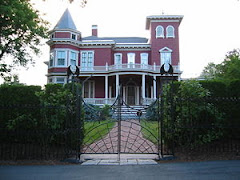
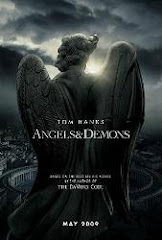


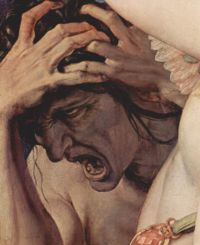

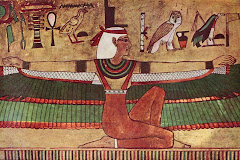
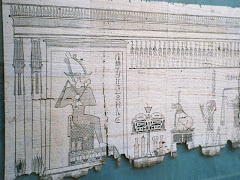


No comments:
Post a Comment